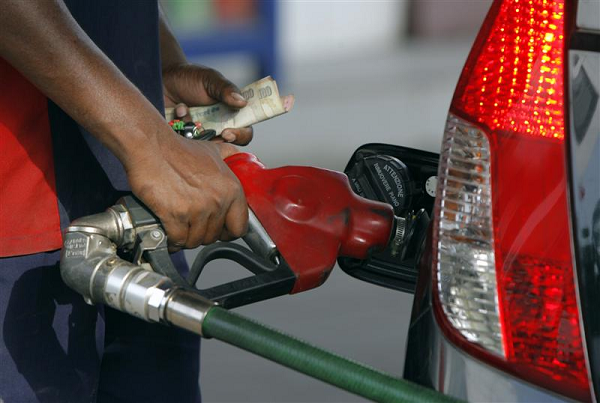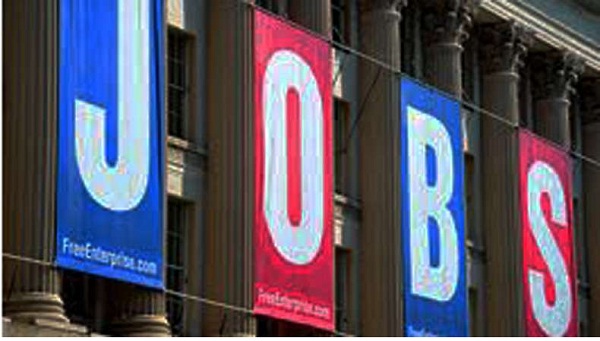
by admin | May 25, 2021 | Opinions
 By Chaitanya Mallapur: Although India’s use of the internet is lower than many poorer countries, the country’s e-commerce sector tripled – or grew by 209 percent over the last five years – from $4.4 billion (Rs.20,020 crore) in 2010 to $13.6 billion (Rs.83,096 crore) in 2014.
By Chaitanya Mallapur: Although India’s use of the internet is lower than many poorer countries, the country’s e-commerce sector tripled – or grew by 209 percent over the last five years – from $4.4 billion (Rs.20,020 crore) in 2010 to $13.6 billion (Rs.83,096 crore) in 2014.
This data was contained in a reply given to the Lok Sabha in March 2016.
India’s e-commerce market is likely to reach $38 billion (Rs.252,700 crore) in 2016, according to an Associated Chambers of Commerce & Industry of India (Assocham) report released in January 2016.
The online retail sector in India is expected to be a $1 trillion (Rs.660,000 crore) market by 2020, according to a recent report by the Confederation of Indian Industry (CII) and Deloitte, a consultancy. The study indicates that more e-commerce will trigger big innovations in India.
The Goods and Services Tax, once implemented, is expected to boost the growth of e-commerce by simplifying taxation and logistics, said the CII-Deloitte report.
Internet penetration across the country is rising with as many as 354 million users reported as of September 2015. Online shoppers in India have increased from 20 million in 2013 to 39 million in 2015, an increase of 95 percent over three years.
India’s e-commerce market rises despite low net use
But India’s internet penetration – the percentage of Indians who use the net – is low, 19 percent in 2014, as IndiaSpend reported earlier. Compare this with Australia (90 percent), the US (87 percent), Japan (86 percent), Brazil (53 percent) and China (46 percent).
In 2014, only 18 of 100 Indians used the internet, against 49.3 for China and 48.3 for Vietnam. Even poorer countries, such as Ghana, had greater internet penetration – 18.9 users per 100 people, according to a Mint report. Similarly, mobile subscriptions in India were 74 per 100 people in 2014, lower than Bangladesh (80), China (92), Indonesia (129) and Vietnam (147).
Mobile internet spend has increased from 54 percent to 64 percent from 2014 to 2015, attributed to high-speed 3G and 4G internet connectivity at some of the world’s lowest prices, fuelling e-commerce growth.
Despite the rise in broadband and mobile internet users, speed remains a major constraint. The average broadband speed in India is 2 mega bits per second (mbps), ranking 115 globally, IndiaSpend has reported. Similarly, the average mobile internet speed is 1.7 mbps, ranking below Thailand, China, Hong Kong and Singapore.
In March this year, the government allowed 100 percent foreign direct investment in online retail marketplaces-electronic platforms that connect buyers and sellers.
India’s e-commerce giants battle a survival of the fittest
As competition grows, and international competitors step in, domestic online retailers will struggle, experts predict.
US retailer Amazon became the second-largest online marketplace by shipments in India last month, after domestic rival Flipkart, pushing former number two, Snapdeal, to third place.
Flipkart’s growth has virtually stalled since the middle of last year and the leadership team hasn’t figured out a way to kick-start sales, according to India Value Fund Advisors partner Haresh Chawla.
“Its gross merchandise volume (GMV) – sales or revenue in online retailing – sold over a given period of time has not grown substantially, which had grown by over 200 percent per annum for the past three years,” Chawla added.
Similarly in the taxi business, multinational Uber is in race with India’s Ola, the current domestic-market leader. Last month, Uber claimed it would overtake Ola by market share within 30 days.
Jabong – an online fashion portal – reported a drop in sales and cut losses in 2015 and is now struggling to find a buyer.
“Consumer internet start-ups find it difficult to navigate slowdowns,” said Chawla.
“Traditional companies usually recover from these cycles. But technology-led companies simply go bust. They have very little consumer loyalty to start with. Most bribe consumers to grow rapidly and cutback (on profits), causing them to implode.”
(In arrangement with IndiaSpend.org, a data-driven, non-profit, public interest journalism platform, where Chaitanya Mallapur is a policy analyst. The views expressed are those of India Spend. The author can be contacted at respond@indiaspend.org)

by admin | May 25, 2021 | Economy, News
 New Delhi (IANS) India’s factory output growth turned flat in March after rising during the month before, even as the annual retail inflation for April rose to 5.39 percent from 4.83 percent in March, official data showed on Thursday.
New Delhi (IANS) India’s factory output growth turned flat in March after rising during the month before, even as the annual retail inflation for April rose to 5.39 percent from 4.83 percent in March, official data showed on Thursday.
The factory output for February, based on the index of industrial production, which had turned positive at 2 percent, after two straight months of decline, rose negligibly by 0.1 percent in March, as per data released by the Central Statistics Office.
As regards annual retail inflation, based on consumer price index, the rise came after two straight months of decline. The inflation rates for the preceding three months were 4.83 percent for March, 5.26 percent for February and 5.69 percent for January.
At the same time, the annual food inflation rose sharply to 6.32 percent from 5.21 percent. This apart, the annual retail inflation in the rural economy was relatively higher at 6.09 percent, against 4.68 percent in the urban areas.
Worryingly for industry, the index for manufacturing, which has the maximum weight in the overall index, actually fell by 1.2 percent in the month under review. While the index for mining also fell, albeit marginally by 0.1 percent, that for electricity grew by a robust 11.3 percent.
Around the same time last month, there was much to cheer as official data forecast the rains during the upcoming monsoon season to be above normal, and that retail inflation fell to a six-month low while factory output rose after three months of decline.

by admin | May 25, 2021 | Business
 New Delhi (IANS) Strong urban consumption sentiment, reversal of dieselization and lower prices are likely to have caused India’s petroleum products consumption growth to touch a record high during last fiscal, American investment banker Jefferies said on Wednesday.
New Delhi (IANS) Strong urban consumption sentiment, reversal of dieselization and lower prices are likely to have caused India’s petroleum products consumption growth to touch a record high during last fiscal, American investment banker Jefferies said on Wednesday.
Total petroleum product consumption growth as reported by the government’s Petroleum Planning and Analysis Cell (PPAC) was at a multi-year high of 10.9 percent in 2015-16, compared to an average growth of 5 percent and a previous high of 7 percent in both 2007 and 2008.
“Strong urban consumption sentiment, reversal of dieselization and lower price are likely to have been factors for strong petrol consumption as it is almost entirely used for personal transportation in two-wheelers and cars,” Jefferies said in a research note.
It said that while diesel growth for the full year was in line with the 10-year median, its growth rate of 9.5 percent in the second half of last fiscal was well above the historical trend.
“Based on our discussion with PPAC, higher demand for both transportation and static equipment for infrastructure projects, poor rainfall leading to higher pump usage and growth of e-commerce leading to retailing of goods movement have been factors contributing to higher diesel consumption, particularly in the fiscal’s second half,” Jefferies said.
“Low crude price has led to higher demand growth of 2.2 percent globally versus the historical average of 1.3 percent, and is likely to have been a factor in India as well,” it added.

by admin | May 25, 2021 | Corporate, Corporate Governance

Minister of State (Independent Charge) for Power, Coal and New and Renewable Energy, Shri Piyush Goyal addressing at an Interactive Session, organised by the ASSOCHAM, in New Delhi
New Delhi:(IANS) New and Renewable Energy Minister Piyush Goyal said here on Friday that indigenous technology development and standardization of projects was essential for the growth of renewable energy.
He said that as the country aims to achieve 175 GW energy generation from renewable sources by 2022, one needs to “pay more attention on ensuring quality and reliability of renewable energy systems for effective promotion of renewable energy”.
“Indigenous technology development and standardization essential for the growth of renewable energy,” he said.
The minister said standardization would facilitate financing options, while proper testing would maintain the quality of products.
He was speaking at the inauguration of the National workshop on Lab Infrastructure for Testing, Standardization, Certification and Inspection for Renewable Energy Deployment Programme.
To ensure that systems installed function properly, he emphasised on maintaining consistency in manufacturing and reliability of the technologies.
The minister said that bio-gas needs to be given “more attention” to make it a “well-organized” industry.
“Improved biomass cook stoves should be promoted for clean cooking solutions, thereby addressing both fuel saving and health hazards concerns of rural women and children,” he said.

by admin | May 25, 2021 | Corporate Jobs, Employment, Private Jobs
 New Delhi:(IANS) As many as five million jobs were lost between 2004-2005 and 2009-2010, paradoxically the time when India witnessed the highest and consistent growth of eight percent in its economy, throwing up a question whether growth should be linked to employment generation, said an Associated Chambers of Commerce (Assocham) study.
New Delhi:(IANS) As many as five million jobs were lost between 2004-2005 and 2009-2010, paradoxically the time when India witnessed the highest and consistent growth of eight percent in its economy, throwing up a question whether growth should be linked to employment generation, said an Associated Chambers of Commerce (Assocham) study.
According to the study, nearly 13 million youth are entering the labour force every year but on the other hand, the gap for the employment and growth got only widened during the period of study which noted that over-emphasis on services and neglect of manufacturing were mainly responsible for this “jobless growth” phenomenon.
According to the Census India data, the number of people seeking jobs grew annually at 2.23 percent between 2001 and 2011, but growth in actual employment during the same period was only 1.4 percent, leaving a huge gap in the form of unemployment.
“This large work force needs to be productively engaged to avoid socio-economic conflicts,” said Assocham secretary general D.S. Rawat.
He said the changing demographic patterns suggest that today’s youth is better educated, is probably more skilled than the previous generation and also is highly aspirational.
Experts argue that the growth of manufacturing will be the key for growth in income and employment for multiple reasons.
“For every job created in the manufacturing sector, three additional jobs are created in related activities. The other is that manufacturing in India is scalable and has higher labour absorption in comparison to services,” the report said.
“In a services-driven economy, which contributed 67.3 percent (at constant price) to the GDP but employed only 27 percent of total working population in 2013-14, enough jobs will not be created to absorb the burgeoning workforce,” it added.
In 2013-14, manufacturing contributed 15 percent to the GDP and employed about the same percentage of total workforce, demonstrating that the sector has a better labour absorption means compared to services.

 By Chaitanya Mallapur: Although India’s use of the internet is lower than many poorer countries, the country’s e-commerce sector tripled – or grew by 209 percent over the last five years – from $4.4 billion (Rs.20,020 crore) in 2010 to $13.6 billion (Rs.83,096 crore) in 2014.
By Chaitanya Mallapur: Although India’s use of the internet is lower than many poorer countries, the country’s e-commerce sector tripled – or grew by 209 percent over the last five years – from $4.4 billion (Rs.20,020 crore) in 2010 to $13.6 billion (Rs.83,096 crore) in 2014.



